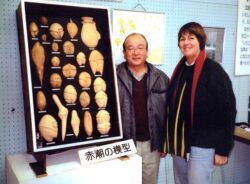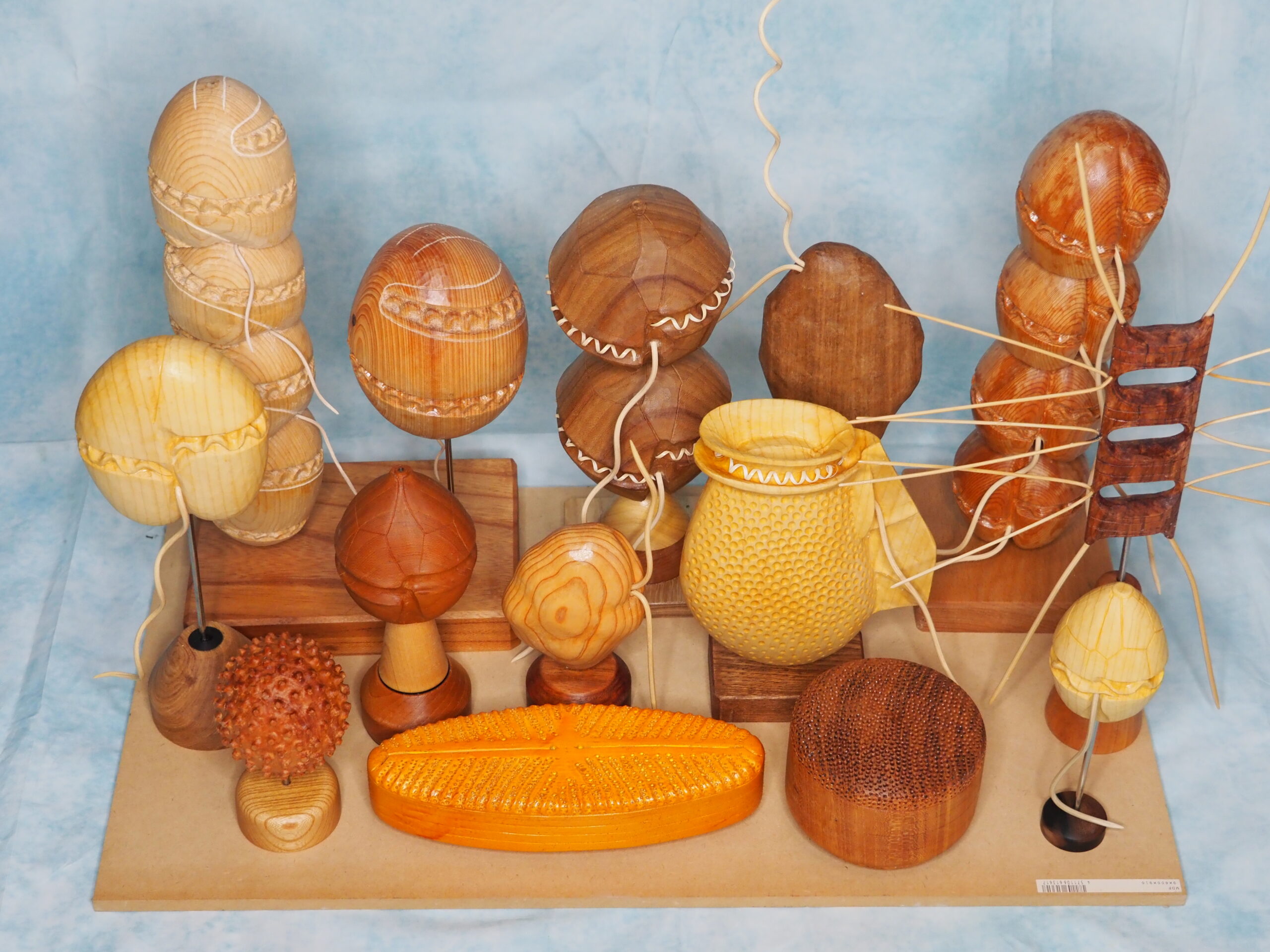Education
Dr. Haruyoshi Takayama was born on July 6th,1945 in Hiroshima Prefecture, Japan. He completed a bachelor's degree in the Department of Biology, Faculty of Science of Hiroshima University in 1969. He had arranged his detailed microscopic observation results over 25 years into a doctoral thesis entitled "Morphological and Taxonomical Studies on the Free-living Unarmored Dinoflagellates Occurring in the Seto Inland Sea and Adjacent Waters" and was awarded a Ph.D. from the University of Tokyo in 1997
Life and career
Dr. Takayama started his work at the Seaweed Section of Hiroshima Prefectural Research Experimental Station in April 1969. The 1969 is the unforgettable year for people working on fish aquaculture in Japan because unprecedented disastrous red tides hit Hiroshima Bay in August that year. Fifty to sixty thousand cage-cultured yellowtail fish Seriola quinqueradiata died due to the red tide . Red tides of the same causative species recurred in the following years and expanded to the eastern part of the Seto Inland Sea with tremendous fisheries damage (7.1 billion Japanese yen in 1971). Dr. Takayama engaged in monitoring the red tides as one of the prefectural research station staffs and started detailed morphological study on several red tide causative species. In the 1970’s, more than 250 red tides had occurred in the Seto Inland Sea along with the development of fish aquaculture. In the course of working on various monitoring tasks, he developed a keen interest in the morphology and classification of the red tide causative species using a scanning electron microscope . He invented a specific apparatus for a critical point dryer to maintain the cell shape of species with thin membranes, such as unarmored dinoflagellates (Noctiluca, Gymnodinium, Karenia, etc.) and raphidophytes (Chattonella, Heterosigma, etc.). He also developed stable skills for observation, e.g., taking photographs of the same individual using both a regular compound microscope and SEM. Based on the detailed observation of cell morphology, he found the usefulness of an apical groove as one of the most important taxonomic characteristics for grouping unarmored dinoflagellates. At the 7th ICHA held in Sendai, Japan in 1995, he explained his thought on the classification of unarmored dinoflagellates with an emphasis on the apical groove, showing many beautiful SEM and LM photographs. His classification of Gymnodinium, Gyrodinium, Cochlodinium, and some other genera enlightened participants, and it led to establishment of some genera such as Karlodinium, Karenia, and Takayama, one of them was dedicated to him to appreciate and recognize his pioneer work.
Dr. Takayama has a hobby of wood carvings, and his exceptional skills have turned many HAB species into beautiful wood carving artworks. His carving artworks have been displayed for visitors at the entrance of Hiroshima Prefectural Research Experimental Station where Dr. Takayam worked (Fig. 1). Fig. 2 shows some of his carvings of HAB species. His stunning artworks were first showcased at the 9th ICHA held in Tasmania, Australia in February 2000. The preciseness and beauty of the artworks gained massive attention and admiration from HAB researchers during the Conference. The level of detail and realism that he imbued into his wood carvings has often left ones with the impression that they are looking at a real cell under the microscope. His HAB species sculptures have also motivated many young researchers to pursue studies in the taxonomy and ecology of HAB species. Since 2000 , his great carvings of microalgal species have been gifted to awardees of the Yasumoto Lifetime Achievement Prize and Patrik Gentien Young Scientist Prize.

Dr. Takayama holding Erythropsidinium agile at his workshop

Wood carvings made for educational purpose
Key HAB publications
Takayama 1985. Apical grooves of unarmored dinoflagellates. Bull. Plankton Soc. Japan, 32(2), 129-140.
Takayama, K. Matsuoka 1991. A reassessment of the specific characters of Gymnodinium mikimotoi Miyake et Kominami ex Oda and Gymnodinium nagasakiense Takayama et Adachi. Bulletin of Plankton Society of Japan 38: 53-68.
Takayama, K. Matsuoka, Y. Fukuyo 1998. A taxonomic study on Gyrodinium aureolum Hulburt (Dinophyceae) from the morphological viewpoint based on materials collected in Japanese coastal waters. Bull. Plankton Soc. Japan, 45,9-19.
Z.B. Yang, H. Takayama, K. Matsuoka, IJ. Hodgkiss 2000. Karenia digitata sp. nov. (Gymnodiniales, Dinophyceae), a new harmful algal bloom species from the coastal waters of west Japan and Hong Kong. Phycologia 39: 463-470.
Nagai, S., Matsuyama, Y., Takayama, H., Kotani, 2002. Morphology of Polykrikos kofoidii and P. schwartzii (Dinophyceae, Polykrikaceae) cysts obtained in culture. Phycologia 41: 319-327.
Iwataki, H. Takayama, K. Matsuoka and Y. Fukuyo 2002. Heterocapsa lanceolate sp. nov. and Heterocapsa horiguchii sp. nov. (Peridiniales, Dinophyceae), two new marine dinoflagellates from coastal Japan. Phycologia 41 (5): 470-479.
Iwataki, H. Takayama, K. Matsuoka, S. Hiroishi and Y. Fukuyo 2002. Taxonomic study on Heterocapsa with special reference to their body scale ultrastructure. Fisheries Science 68 (Supplement I): 631-632.
Gomez, F., Nagahama, Y., Takayama, H., Furuya, K. 2005. Is Karenia a synonym of Asterodinium-Brachidinium (Gymnodiniales, Dinophyceae)? Acta Botanica Croatica 64: 263-274.
Omura, M. Iwataki, H. Takayama, V.M. Borja and Y Fukuyo 2012. Marine Phytoplankton of the Western Pacific. Kouseisha-Kouseikaku, Tokyo, 160 pp.
Iwataki, H. Takayama, K. Takahashi and K. Matsuoka 2015. Taxonomy and distribution of the unarnnored dinoflagellates Cochlodinium polykrikoides and C. fulvescens. In Marine Protists: Diversity and Dynamics (Ed S. Ohtsuka, T. Suzaki, T. Horiguchi, F. Not), Springer, pp. 551-565.

